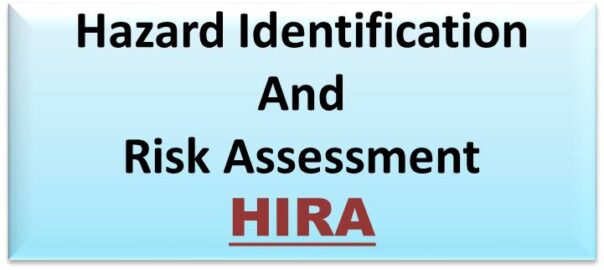Trust all my readers are safe and happy. It has been sometime since I had last posted. Felt it is time to continue the series of conversations Jaggy and Maggie are having with related to Safety. In this blog too they will be discussing a very crucial element to safety which is Hazard Identification and Risk Assessment (HIRA). HIRA applies everywhere. Let us understand this through the conversation.
Jaggy: “Hello Maggie!”
Maggie: “Hi! Jaggy. It has been more than a month since we last met.”
Jaggy: “Yes Maggie. Was busy with my training activities.”
Maggie: “One always needs to be busy. Let us continue the conversation from where we left it.”
Jaggy: “Sure! I had told you that one should do a HIRA which is the foundation of Safety.”
Maggie: “HIRA! The only HIRA I know is called a Diamond in Hindi.”
Jaggy: “Spoken like a lady. Of course diamonds are the best friends of ladies. But here HIRA stands for Hazard Identification and Risk Assessment.”
Maggie: “Phew! Never knew it. Can you explain?”
Jaggy: “Before starting any work, one should always know the Hazards present in the place where we work.”
Maggie: “Can you explain, what is a hazard?”
Jaggy: “To put it simply a Hazard means a Danger.”
Maggie: “I don’t get it.”
Jaggy: “A hazard is any event, situation, environment, activity, substance that can potentially cause an injury or illness to anyone is defined as a hazard by many international standards.”
Maggie: “Now I get it. It is simply a clear and present danger.”
Jaggy: “Good Maggie now you are understanding definitions too.”
Maggie: “Then what is a Risk?”
Jaggy: “Risk is a loss, injury, damage or harm caused due to the hazard.”

HAZARD 
RISK
Maggie: “Could you explain in a more easy way please?”
Jaggy: “Knowing there is a danger and playing with it is a Risk.”
Maggie: “Explain with examples please.”
Jaggy: “Riding a two wheeler on a good road is a hazard, riding without a Helmet is a Risk. LPG Gas cylinder in a home is a hazard, fiddling with it is a Risk. A Batsman facing a fast bowler in Cricket with protection is a hazard, without it is a Risk. Even investing in finance schemes are a risk if you don’t read the offer document carefully.”
Maggie: “There seem to be hazards everywhere. What should I do?”
Jaggy: “Simple check out the hazard and assess the risk involved while working. Every hazard cannot be a risk at all times.”
Maggie: “You are saying knowing the hazards and assessing risk will help in reducing injuries and accidents.”
Jaggy: “Yes. Let me narrate a story to explain the same. In the epic Mahabharatha, the Kauravas presented the Pandavas a palace to live in. The Pandavas were happy to receive it but had the information it could be a trap. When they went into the palace the Pandavas on inspecting the interior of the palace they found it was made of wax a material which is highly flammable. They realised it was a trap to burn them alive. So they dug an underground tunnel and escaped. They had actually done a HIRA and initiated the appropriate control measures.”
Maggie: “Wow! Glad to know even in those days they did that! But I did not understand, what are Control Measures?”
Jaggy: “It is a process adopted to take care of the hazards and risk as every hazard can become a Risk at some point of time if not taken care of.”
Maggie: “Oh I see! Tell me about it in our next conversation.” Jaggy: “It will be a pleasure of mine. Stay Safe and be safe.”
Hazard identification Risk Assessments help in reducing accidents to a great extent. Safety professionals always live by HIRA. They know that if a HIRA is done properly, damages to property and life loss can be minimised. Problems cannot be eliminated but certainly can be minimised. When kings and emperors of the yore did that, why not we? Till my next blog, I pledge to remain safe and do my HIRA to keep India Safe.
Seshadri Varadarajan.





